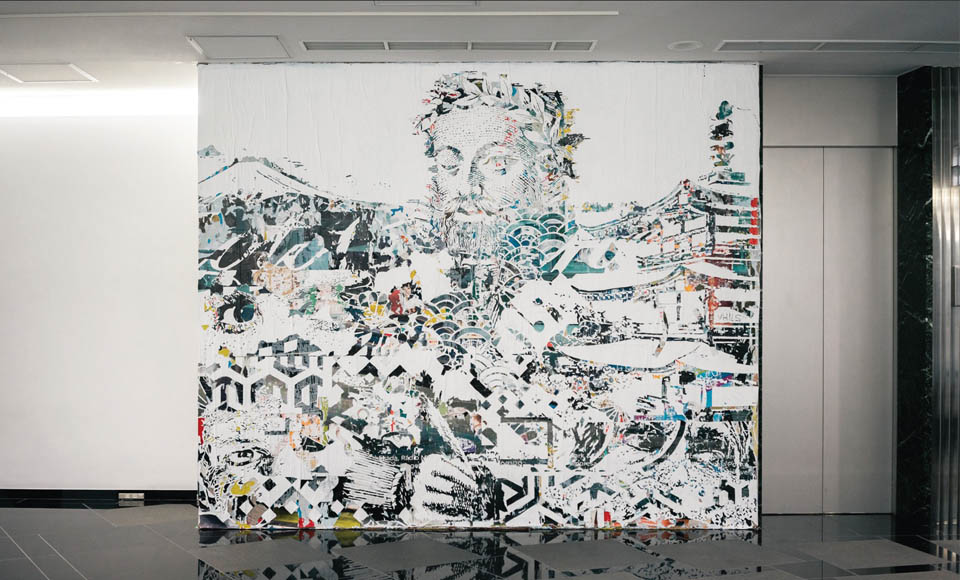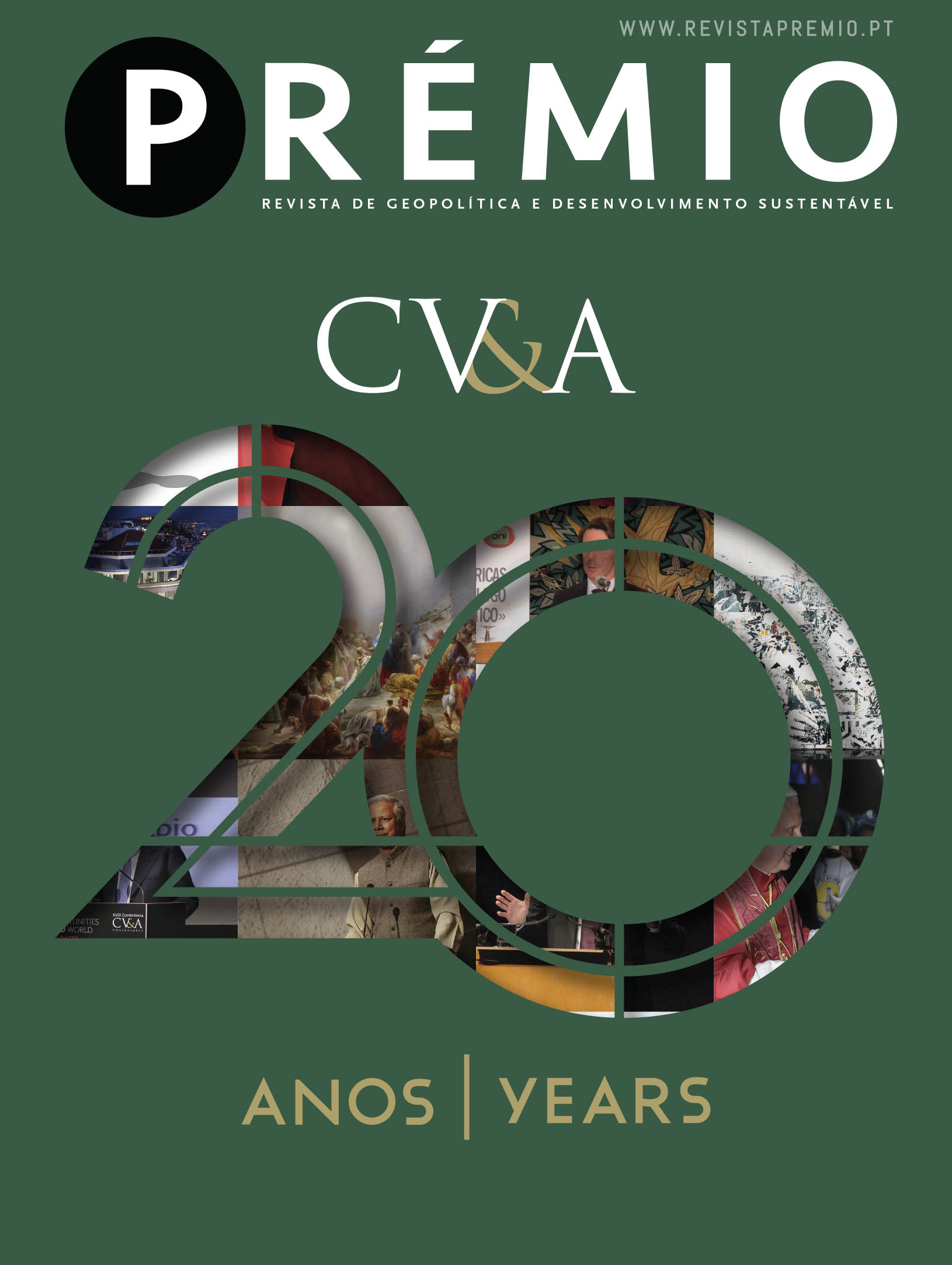Filipe Santos Costa, Journalist
During cherry blossom season, when Tokyo explodes with all the beauty of these interlaced flowers, leaving residents and tourists moved by such beauty and tearful with so much pollen, Nakameguro is one of the places that must be visited. From daybreak to nightfall, in on any day of March, the river is framed by interweaving blossoming branches of trees growing on either bank. This is an Instagram paradise, with thousands elbowing their way to the bridges over the river Meguro to take selfies in communion with the unique beauty of the sakuras at those inventive angles that most favour those photographed and hide away the surrounding crowds.
Whoever is prepared to await three to four hours to get into the colossal Nakameguro Starbucks may perhaps get a place on the terrace overlooking the cotton candy effect covering the river. This Staba (an abbreviation for Starbucks as the Japanese shorten the names of everything) is a place through which the Japanese love of the sublime of nature flows in parallel with their frenetic consumerism. Five storeys of excess and inflated prices, which are a microcosm of the cosmopolitan and open to the world Tokyo. There are cafés from over 20 different origins, Italian pizzas and French pastries. It is stated that the Japanese capital is the best place in the world outside of Italy to eat pizza, and I have heard French persons, even those Parisian by birth, with everything such implies, accept that they eat better macaroons and baguettes in Tokyo than in Paris. There are also Portuguese bifanas better than many you will ever eat in Portugal. However, not at Staba.
To this end, you need to walk the few hundred metres to Meguro Ginza Shotengai. This is the main retail street in Nakameguro, where they do this job in great style. At Y2T, there is also Portuguese wine, both verdes and others from the Dão, and the wifi password is 2014cabriz, the year the establishment opened and the name of the first Portuguese wine producer with whom the owner, Tomohiro-san, did business.
Nothing connected Tomohiro to Portugal other than a passion for vinho verde. On visiting Portugal, to find out about the origins of this pleasure, he discovered other reasons to like the place, including bifanas and other specialities, and other wines beyond the verdes. Through to this epiphany, Tomohiro perceived Portugal pretty much like his 128 million of his compatriots: the birthplace of Cristiano Ronaldo and the first western country to get referenced in Japanese history manuals.
In the 5th year of the Japanese education system, students learn that three Portuguese vessels anchored off Tanegashima in 1543. This was an accident: it was typhoon season and the Chinese junk that should have led them to Macau had been blown off course as far as this small island in the south of Japan. There are not more than one or two classes covering the misfortunate arrival of the Portuguese in Japan. However, as with so many other random events, this changed history.

A obra de Vhils, oferecida pela CV&A, na embaixada de Portugal no Japão
Along with the Portuguese, the archipelago also saw the arrival of the European culture and science of the Renaissance, Christianity and the beginnings of trade with the West. And firepower. “Indeed, the order of reference is precisely the opposite” – as Eduardo Kol de Carvalho notes in his book “Nós e os Japoneses”: the arrival of the Portuguese gets mentioned, first and foremost, because they brought an arquebus, the first firearm seen in Japan, “which may appear to shock us on first sight until realising that it was thanks to the rifles introduced to Japan by the Portuguese that the military leaders were able to restore central power and end the constant warfare among the feudal warlords that had ripped the country apart.”
The arrival of two Antónios and one Francisco in Japan generated other consequences worthy of mention: 1) the rifle was the first western invention adopted by the Japanese: they dismantled it, examined it and decided to remake it themselves, but better as has since happened with everything arriving from the exterior that impresses them, whether weapons, railways or pizzas; 2) Nagasaki, a fishing town, became the main port of Japan, the arrival point of the Nau do Trato trade vessel plying the route via Macau, one of the most lucrative for the Portuguese in Asia, which the Japanese named both kurofune (black ship) and takarabune (treasure ship); 3) the Jesuits took on the mission to convert Japan and were so efficient and effective (at one stage, having converted over 150,000 souls, including major feudal lords) that they became perceived as a threat to the central power of the shogun – to such an extent that the Portuguese and Spanish were then subject to persecution and expulsion (and not only the missionaries but also the traders); 4) following this expulsion, the Japanese then again shut themselves off from the world in accordance with the sakoku edits (literally meaning “country closed”). There then came two centuries of isolation when the rest of the world was doing exactly the opposite.
At the entrance to Y2T, there is a map of Portugal and a menu announcing the house speciality: ビファナ – bifana written in katakana, the alphabet the Japanese established for foreign words. The Japanese language incorporates three alphabets: kanji, an adaptation of Chinese characters, the first form of writing introduced to Japan; hiragana, a simpler alphabet created for the illiterate; and katakana, specifically for foreign words with this need arising when the Portuguese introduced concepts and objects hitherto unknown to the Japanese.
Currently, katakana serves above all for japenglish, a linguistic mixture that adapts English to the local pronunciation for words as common as ‘depato’ (department store), ‘erebeta’ (elevator) or ‘biru’ (beer). However, this all began with Portuguese words relating to what were then common objects but unknown in Japan and that remain today with this Portuguese-Japanese designation, including パン (pan/pão/bread), ボタン (botan/botão/button), かるた (karuta/cartas de jogar/playing cards), ビードロ (bidoro/vidro/glass). Ou キリシタン (kirishitan/cristão/Christian).
The history textbooks commonly refer to the Portuguese presence in Japan as “the Christian century” but which did not end well: the persecution of the Jesuit missionaries and Japanese Christians included apostasy or decapitation, crucifixion or other more refined forms of cruelty. Christianism was only not totally eradicated from Japan because some communities clandestinely continued with their worship practices – there are today descendants of these hidden Christians and the various remnants of this secret worship are now Unesco World Heritage. Furthermore, the O-kunshi ‘matsuri’ (street festival) is a legacy of Christian Nagasaki – following the expulsion of the Portuguese and the persecution of the Christians, the annual Catholic festival, with its solemn procession, underwent transformation int a popular street festival, celebrating the harvest and a Shinto divinity. A few Hail Marys got lost but a party was gained.
The consolation prize for Catholicism is the current popularity of Western style white weddings: the brides love the dresses and the ritual and, on Sunday afternoons, the promenade in front of Tokyo Station looks like a wedding fair with all the newlyweds out in large numbers for photographic sessions.
Following the expulsion of the Portuguese missionaries and traders, only in 1903 did Portugal resume diplomatic relations with Japan. The archipelago was then preparing for the extraordinary development that would unleash the global ambitions that burst in the disaster of World War Two. Portugal, the former global power, was living through the decadence of its bankrupt nobility. Japan has always re-emerged; Portugal not so much.
There are entire libraries on the “Japanese miracle” while, in fact, there are various: the industrial boom in the dawn of the 20th century; the reconstruction of the only country decimated by atomic bombs and that stands proud as the world’s second largest economy; the resilience needed to always overcome its exposure to the extremes of natures – earthquakes, tsunamis, typhoons, erupting volcanoes, extreme climate conditions, a lack of arable land, limited living space… Without moaning or any self-indulgence but with stoicism and a sense of community, characteristics that both raised a nation and help cope with the overcrowding on the underground system in Shinjuku station at rush hour.
In March of this year, the diplomatic mission of Portugal to Japan moved into new installations, finally and, at the time, almost 500 years after the first meeting. When commissioning a work for the new embassy, Alexandre Farto – a.k.a. Vhils – placed Camões at the centre of the work that also highlights Mount Fuji and a pagoda. At the inauguration of the embassy and the work (donated by Cunha Vaz & Associados), Vhils spoke of art as a place for mediation.
“The work sets out to establish an intercultural dialogue, exploring the symbolic richness and shared history between Portugal and Japan. The selection of features such as Camões, Mount Fuji, glimpses the gazes, the common words shared by the two countries, Japanese temples, seeks to illustrate the points of meeting and convergence between the two cultures, emphasising the importance of mutual exchanges and comprehension. Visually, the work incorporates the typographies and patterns specific to each country, such as Japanese calligraphy and Portuguese tiles, highlighting the uniqueness and depth of each cultural tradition. In applying the collage techniques of Japanese posters and subsequent white painting, I seek to question the perceptions of cultural borders and stress the fluidity and permeability of identities”, Vhils explained to me on his travels between other parts of this globe.
Boundaries and permeability, fluidity and convergence, exchange and understanding. The concepts behind the work of Vhils in Tokyo constitute the essence of that which makes the joint history of the two countries. With highs and lows, by intention or by chance, there is a connection that does not get broken. Vhils speaks of an “intrinsic connection between distinctive cultures, transcending the superficial differences and revealing the universality of human experience”. Even when distance does not help, the politicians do not understand each other and businesses are not investing, this may be the key to understanding the interlinkage between Portugal and Japan.







